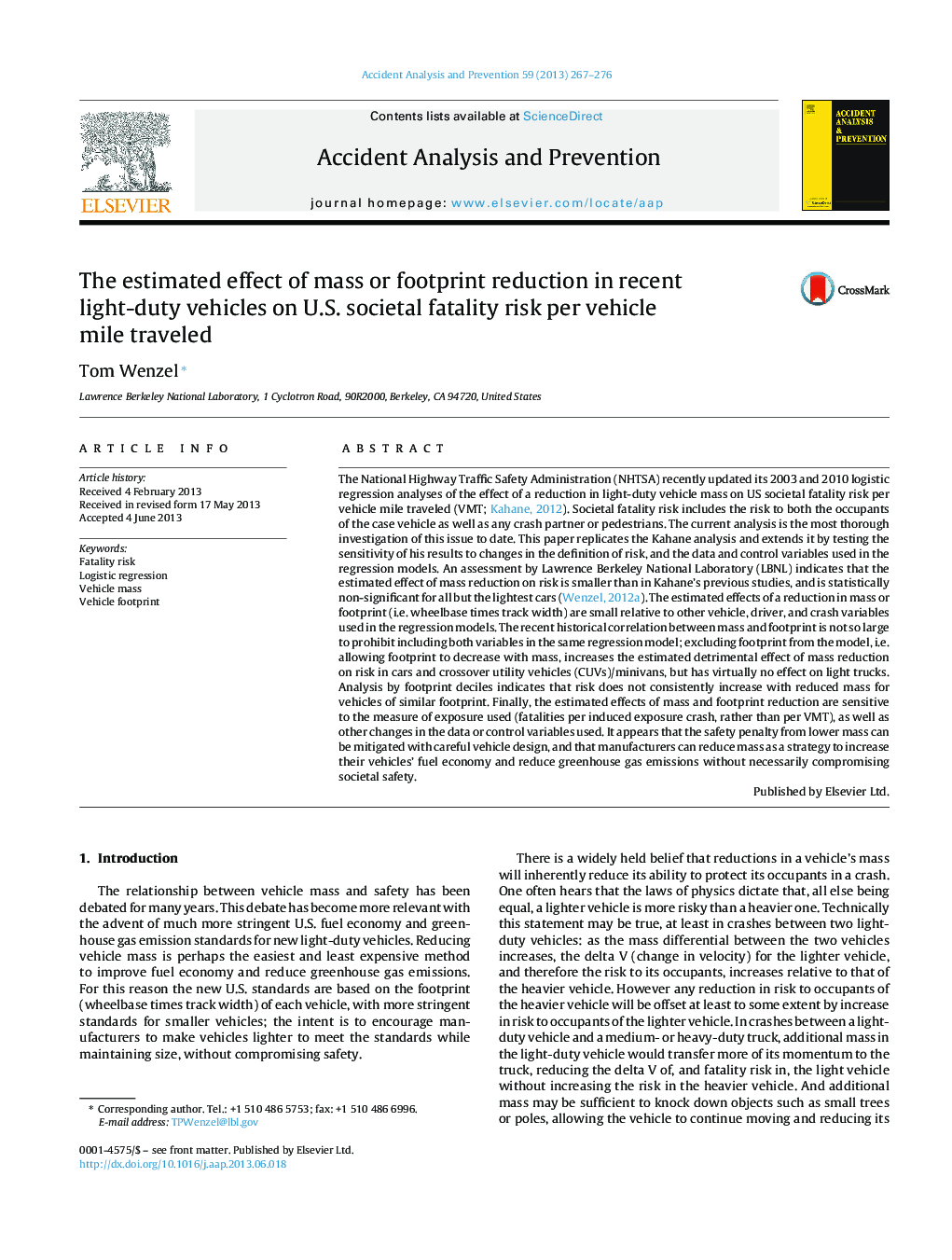| کد مقاله | کد نشریه | سال انتشار | مقاله انگلیسی | نسخه تمام متن |
|---|---|---|---|---|
| 6966132 | 1452938 | 2013 | 10 صفحه PDF | دانلود رایگان |
عنوان انگلیسی مقاله ISI
The estimated effect of mass or footprint reduction in recent light-duty vehicles on U.S. societal fatality risk per vehicle mile traveled
ترجمه فارسی عنوان
اثر برآورد شده از کاهش وزن یا ریزش در وسایل نقلیه جدید کم مصرف بر روی خطر مرگ و میر اجتماعی در ایالات متحده در هر مایل مرسوم
دانلود مقاله + سفارش ترجمه
دانلود مقاله ISI انگلیسی
رایگان برای ایرانیان
کلمات کلیدی
خطر مرگ و میر، رگرسیون لجستیک، جرم خودرو، رد پای خودرو
موضوعات مرتبط
مهندسی و علوم پایه
مهندسی شیمی
بهداشت و امنیت شیمی
چکیده انگلیسی
The National Highway Traffic Safety Administration (NHTSA) recently updated its 2003 and 2010 logistic regression analyses of the effect of a reduction in light-duty vehicle mass on US societal fatality risk per vehicle mile traveled (VMT; Kahane, 2012). Societal fatality risk includes the risk to both the occupants of the case vehicle as well as any crash partner or pedestrians. The current analysis is the most thorough investigation of this issue to date. This paper replicates the Kahane analysis and extends it by testing the sensitivity of his results to changes in the definition of risk, and the data and control variables used in the regression models. An assessment by Lawrence Berkeley National Laboratory (LBNL) indicates that the estimated effect of mass reduction on risk is smaller than in Kahane's previous studies, and is statistically non-significant for all but the lightest cars (Wenzel, 2012a). The estimated effects of a reduction in mass or footprint (i.e. wheelbase times track width) are small relative to other vehicle, driver, and crash variables used in the regression models. The recent historical correlation between mass and footprint is not so large to prohibit including both variables in the same regression model; excluding footprint from the model, i.e. allowing footprint to decrease with mass, increases the estimated detrimental effect of mass reduction on risk in cars and crossover utility vehicles (CUVs)/minivans, but has virtually no effect on light trucks. Analysis by footprint deciles indicates that risk does not consistently increase with reduced mass for vehicles of similar footprint. Finally, the estimated effects of mass and footprint reduction are sensitive to the measure of exposure used (fatalities per induced exposure crash, rather than per VMT), as well as other changes in the data or control variables used. It appears that the safety penalty from lower mass can be mitigated with careful vehicle design, and that manufacturers can reduce mass as a strategy to increase their vehicles' fuel economy and reduce greenhouse gas emissions without necessarily compromising societal safety.
ناشر
Database: Elsevier - ScienceDirect (ساینس دایرکت)
Journal: Accident Analysis & Prevention - Volume 59, October 2013, Pages 267-276
Journal: Accident Analysis & Prevention - Volume 59, October 2013, Pages 267-276
نویسندگان
Tom Wenzel,
